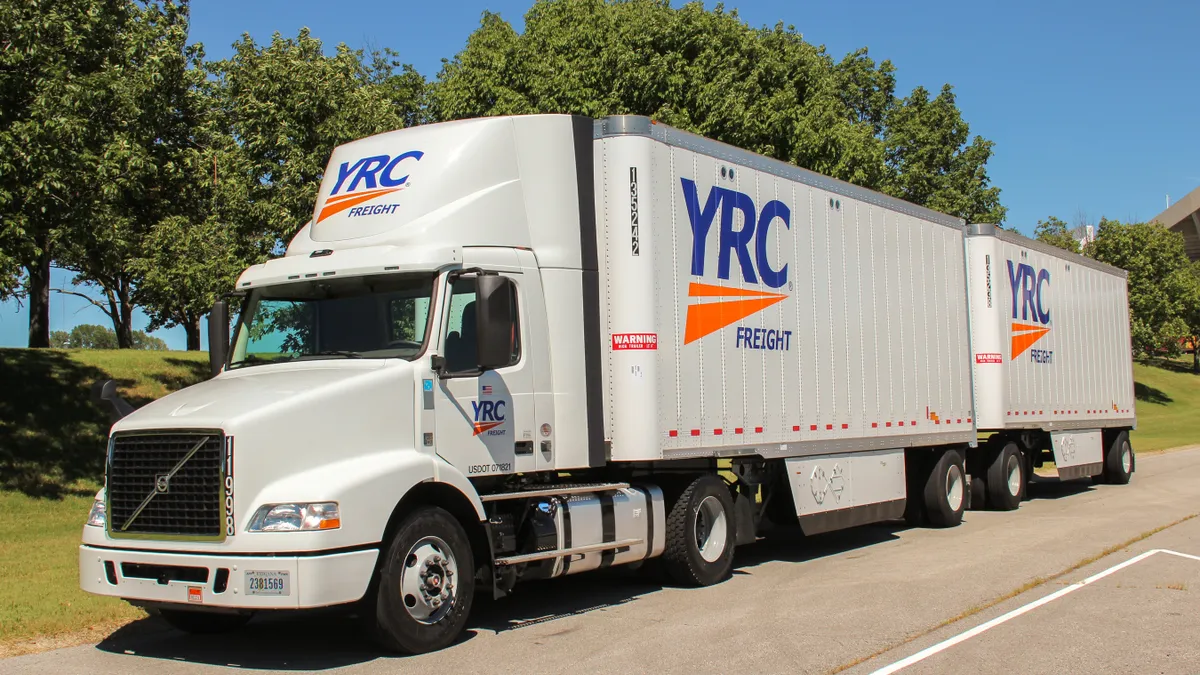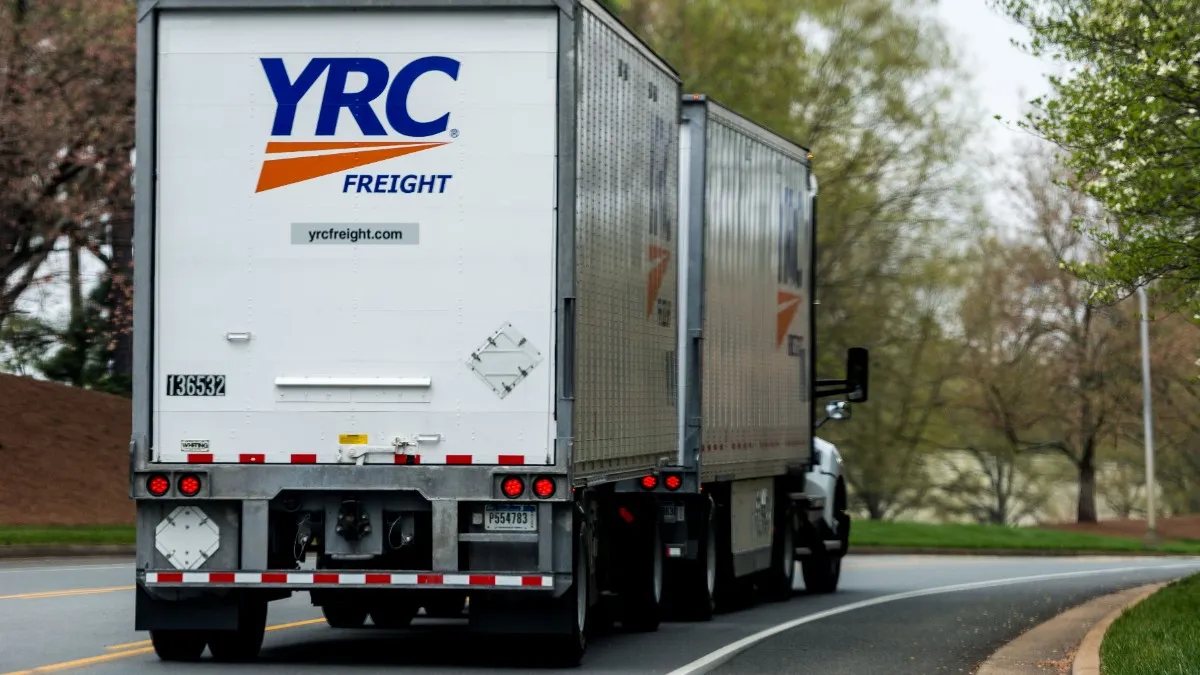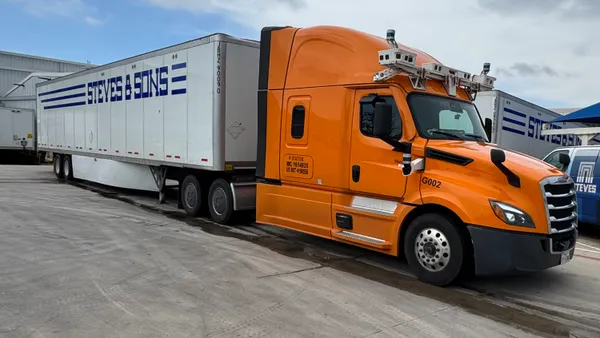In the early months of the pandemic, Yellow Corporation made headlines for teetering on the brink of financial ruin. Then came $700 million in pandemic relief funds, which not only saved the company from bankruptcy, but allowed it to spend $400 million on capital projects and maintenance for its aging fleet.
But last week, a House oversight investigation purported that not only was Yellow unqualified for the funds, it also violated the terms of the CARES Act relief program by spending the money on losses that predated the pandemic.
Yellow refutes the investigation’s claims, maintaining that the necessary loan helped save 30,000 jobs and kept freight moving during the pandemic.
“Yellow’s eligibility for and use of its CARES Act funds is, was, and continues to be appropriate in every respect,” according to a letter sent to the subcommittee from Yellow’s legal counsel.
The report, from the Select Subcommittee on the Coronavirus Crisis, details what it found to be the inappropriately political nature of granting Yellow its loan and interest rate, the misuse of funds by the carrier and recommendations for future funding. But there’s plenty more in the 30-page report that sheds new light on Yellow’s finances and LTL market share.
Here’s 10 takeaways from the report.
1. Why it matters: Yellow’s loan was 95% of total available emergency funds
In July 2020, Yellow was granted nearly all of the $735.9 million in emergency relief funds loaned to companies “critical to maintaining national security.” Ten other companies were granted a combined $35.9 million in October 2020, despite having applied for funding at the same time as Yellow.
Yellow’s loan amounted to 95% of CARES Act funds for national security businesses
2. Forget fairness. Was the loan appropriate?
At the crux of the report is the subcommittee’s claim that Yellow did not qualify for the loans.
Department of Defense officials wrote to Deputy Assistant Secretary of Defense for Industrial Policy Scott Baum that Yellow’s services were akin to a “commodity” and that there were “plenty of other trucking companies,” that could provide the same services, according to the report.
“I was surprised when this happened that nobody questioned the core economic determination, because it was clearly so wrong,” said Ted Prince, co-founder and chief strategy officer at Tiger Cool Express LLC. “At the time that this was done, the point was that [Yellow] handles all of this traffic for the DOD, and that’s true. But what it didn’t say was that there is other capacity out there. There was a glut of capacity.”
Yellow refutes the House committee’s claims. In a statement from Yellow’s legal counsel to subcommittee Chairman James Clyburn that was emailed to Transport Dive, the company underscored that it is one of the country’s largest LTL carriers and a major LTL service provider for the Department of Defense, with expertise in military supply chain operations.
3. Career officials recommended denying the loan due to pending litigation against Yellow and its limited market share of LTL services.
DOD Transportation Command staff wrote in their recommendation that a loss of Yellow’s services to the department would have “minimal impact” given the substantial capacity of others in the industry, which thus far had been underutilized.
In its loan application, Yellow asserted that it provides 68% of the DOD’s LTL carrier services, a number it continues to stand by and that was used by the Treasury Department in its own announcement of the loan in 2020.
But career officials found that Yellow provided half of that share, at 34% of DOD services. The fact that the DOD was engaged in litigation against Yellow throughout the loan application process further dissuaded career officials against the loan’s viability.
“Senior career DOD officials concluded, after collecting and analyzing information about the services that Yellow provided to DOD, that Yellow should not be certified as ’critical to maintaining national security’ for the purposes of obtaining a CARES Act loan,” according to the report.
4. Should Yellow have been allowed to use the funds on capital projects?
Yellow used $400 million of its loan on long-term capital projects, many of which the committee says were not related to pandemic-related losses, a violation of the CARES Act terms.
While Yellow requested $345 million “to fund newly created debt related to deferring contractual obligations in 2020,” it also requested $365 million explicitly for “capital investment required to replenish the fleet and modernize the technology infrastructure,” according to the report.
Finally, the report states that Yellow failed to substantiate the connection between the projects and the carrier’s pandemic-induced financial losses, instead applying for $710 million all as “covered losses” incurred as a result of the pandemic, and being granted nearly all of the requested amount.
Yellow maintains that use of the funds was properly vetted and approved by the Treasury Department.
“The documents that Yellow provided to the Committee also establish that Yellow was required to seek approval from Treasury through explicit disbursement requests to obtain any funding thereunder,” the company wrote in its letter to the subcommittee. “As a practical matter, this means that Treasury reviewed and approved the use of all funds in advance of their disbursement to Yellow under both the prior Presidential administration as well as the current.”
5. Did Yellow dip into the ‘cookie jar’ to play catch up?
Despite Yellow’s stance that it acted appropriately in all of its spending plans, the report cites a quote from Yellow CFO Jamie Pierson that investigators believed showed the carrier acted in bad faith regarding whether its expenses were related to pandemic-induced losses.
“While we had our hand in the cookie jar, we thought we would try to get a little ‘catch up’ capex [capital expenditures] while we were at it,” Pierson wrote in a May 1, 2020, email to creditors regarding use of more than half of the loan for new trailers, tractors and technology.
In the first quarter of 2020, most of which preceded the pandemic, Yellow spent $13 million on capital spending. However, in the first quarter of 2021, following the disbursement of its Treasury loan, its capital spending jumped to $202 million, according to the report. Last year, the carrier spent $497.6 million on capital projects, compared to $145.4 million in 2018 and $143.2 million in 2019.
“Yellow can account for, and has accounted for, each and every dollar of Cares Act loan funding it received,” the carrier contended in its letter to Clyburn.
Yellow spent much of its capital on equipment in 2021
6. Yellow needed funding to repair its aging fleet.
Prince of Tiger Cool Express says he wasn’t surprised by Yellow’s use of the money to cover necessary fleet maintenance. Yellow’s trucks are 11 years old on average, more than double the industry average of five years, according to the carrier’s loan application.
“It was clear they had no cash to buy equipment, and it was clear that was not the purpose of the [pandemic relief] money, but they went out and did it anyway, it was clear they had to,” Prince said. “The cost of maintenance is just too high. And they were allowed to do it.”
In its loan application, Yellow stated that it needed 2,250 new tractors and 3,000 new trailers in order to meet future obligations.
7. Yellow’s loan interest was below market rate.
A key component of the subcommittee’s investigation is the claim that Yellow was inappropriately given an interest rate below what the company had been granted by private creditors. Treasury charged Yellow a LIBOR plus 3.5% rate, much lower than the LIBOR plus 7.5% interest rate that private creditor Apollo charged for its September 2019 $600 million loan to the company.
The report writes that doing so violated the CARES Act, which stipulated that Treasury could only make national security loans with a reasonable level of risk and not less than an interest rate based on pre-pandemic market conditions.
Yellow noted that while it did receive a loan at lower than market rate, the carrier posted a first-priority lien on all equipment purchased with the loan as collateral, as well as a junior lien on all other assets. Treasury also received 29.8% of Yellow’s stock.
8. Trump appointees were involved in the loan approval process.
Perhaps the investigation’s biggest complaint is that political motivations overrode recommendations from career industry professionals in the DOD.
The House subcommittee found a long list of political figures had a hand in approving the loan. The list includes top administration officials at the time, including President Donald Trump, White House Chief of Staff Mark Meadows, Defense Secretary Mark Esper and Treasury Secretary Steven Mnuchin. But it also implicates other actors, notably then-Teamsters President James Hoffa.
9. The House subcommittee recommends tighter rules on emergency funding.
The subcommittee laid out a tougher set of standards for emergency loan legislation, in an effort to stop future political overrides of expert recommendations. With that, the subcommittee wants more reasoning and data to accompany national security certifications for companies.
Perhaps the most notable of its recommendations, the subcommittee recommended that no company that faces credible fraud allegations against a federal agency should receive emergency federal aid.
10. Yellow may soon face yet another investigation.
As its final recommendation, the subcommittee wrote that the Treasury Department’s Inspector General should investigate whether Yellow falsified claims in its loan application regarding the open False Claims Act investigation, its use of the funds and its share of DOD trucking services. Yellow vehemently opposed the recommendation in its letter to Clyburn.
“The Committee’s unsubstantiated assertions about Yellow, including its ludicrous suggestion that the DoD (or Treasury for that matter) was somehow duped about a public lawsuit the Department of Justice was then litigating on its behalf, are baseless,” according to the statement.



















